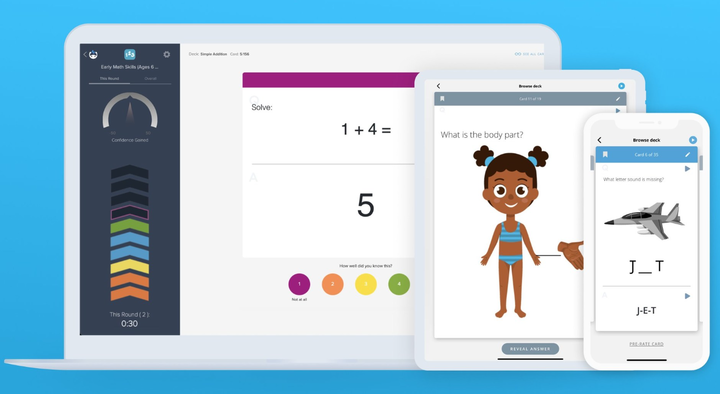
Benefits of Centralised MOOC Platforms
Why Centralised MOOC Platforms Matter More Than Ever
Imagine trying to find a single puzzle piece in a room full of boxes. That’s what it can feel like when you’re hunting for the right online course in today’s crowded e-learning world. There are thousands of free and paid courses out there, but without guidance, it’s easy to feel overwhelmed. This is where centralised MOOC (Massive Open Online Course) platforms come in.
Instead of hopping from site to site, you can now explore a wide range of courses all in one place. These platforms gather content from top universities, institutions, and educators globally, giving you a clearer view of what’s available. Whether you’re trying to upskill, switch careers, or simply follow a passion, these platforms save time and stress.
In this blog, you’ll learn what centralised MOOC platforms are, why they’re so useful, the benefits they offer, and how they can genuinely enhance your learning journey. You’ll also discover expert tips to make the most of your time online and common mistakes to avoid. Let’s get started.
What Are Centralised MOOC Platforms?
A Simple Definition

A centralised MOOC platform is a website or service that brings together online courses from multiple sources into one convenient location. Rather than searching different websites for different topics, you can search once and explore many options.
Some popular examples include:
- Coursera (offering content from universities like Stanford and Yale)
- edX (a joint venture between Harvard and MIT)
- FutureLearn (based in the UK, with offerings from top British universities)
- Class Central (an aggregator listing free courses from various platforms)
These platforms can include a mix of free and paid content, but our focus today is on how they help you access the best free online courses.
Why Centralised Platforms Are Gaining Popularity
Saving Time and Effort
With a centralised MOOC platform, you don’t have to dig through multiple sites to find what you need. This means:
- Faster access to a variety of courses
- Easier comparison between course topics and quality
- Quicker decisions about which course to take
Access to Credible Institutions
Most centralised platforms host courses from universities, non-profits, or industry leaders. That means you’re learning from the best, and often, at no cost.
For example, you might take a psychology course from Yale or a computer science course from Harvard, right from your home. That’s the power of centralisation.
Key Benefits of Centralised Online Learning
1. Diverse Topics at Your Fingertips
Looking to explore something niche, like medieval literature or quantum computing? These platforms often list thousands of courses, including lesser-known or specialist subjects you might not find elsewhere.
2. Flexible and Self-Paced Learning

You can often learn at your own pace, fitting study time around work or personal commitments. This flexibility is especially useful for working professionals and parents.
3. Free Learning with High Value
Many of the best courses are entirely free, even those provided by elite institutions. While certificates may cost extra, the core learning is often accessible at no charge.
4. One Account, Multiple Courses
With a single login, you can track progress across various courses, making it easier to manage your learning experience.
5. Improved Discoverability Through Filters and Reviews
Course aggregators often allow users to filter by skill level, duration, rating, or language. Reviews from other learners give valuable insights before you commit.
Expert Tips: Getting the Most from MOOC Platforms
Set Clear Learning Goals
Before you start browsing, ask yourself:
- What do I want to learn?
- Why is it important to me?
- How much time can I realistically commit each week?
Use Reviews and Ratings Wisely
Not all courses are created equal. Use peer reviews to judge course quality, structure, and teaching style. Look for high-rated courses with detailed feedback.
Don’t Skip the Intro Videos
These short clips often give you a clear sense of the instructor’s style and course expectations.
Mix and Match Platforms
While centralised, some platforms link to content hosted elsewhere. Don’t hesitate to jump between platforms if a course looks promising.
Common Pitfalls to Avoid
Starting Too Many Courses at Once
It’s tempting to sign up for multiple courses. But spreading yourself too thin can lead to burnout or dropouts. Start with one or two, and expand from there.
Ignoring Deadlines (When They Exist)
Some courses are self-paced, but others run on schedules. Check the format before enrolling, especially if you’re juggling other responsibilities.
Underestimating Workload
Free doesn’t mean easy. University-level content can be challenging, and good courses often include quizzes, essays, or exams.
Real-World Example: How One Learner Changed Careers
Sarah, a marketing assistant in her thirties, has always had an interest in data analysis. With limited time and no budget for a university degree, she turned to FutureLearn and Coursera.
By following a structured path of free courses, she built up her skills, added project work to her CV, and eventually landed an entry-level data analyst job at a local firm. Sarah’s story is not unique—it’s a path that many learners now take, made possible by centralised MOOC platforms.
Advanced Insights: The Future of Centralised Learning
Integration with Career Services
Some platforms now offer career services like CV reviews, mock interviews, and job placement help. Coursera, for instance, partners with major employers and may list jobs matched to your skills.
Badges and Microcredentials
Instead of full degrees, many platforms offer shorter, skill-focused programs called microcredentials. These can be added to LinkedIn profiles or CVs to boost your professional appeal.
AI-Powered Recommendations
Future iterations of centralised platforms will likely use AI to recommend the most relevant courses based on your goals, interests, and learning style.
Conclusion: Start Your Learning Journey with Confidence

In today’s fast-changing world, learning is not just helpful – it’s essential. Centralised MOOC platforms are making it easier than ever to grow your knowledge without the traditional barriers of cost or geography.
Whether you’re advancing your career, discovering a new hobby, or simply feeding your curiosity, there’s a course out there waiting for you. These platforms remove the guesswork, giving you access to high-quality education from top institutions worldwide.
Ready to begin?
Explore a centralised MOOC platform today and take the first step towards your next learning milestone. Your future skills are just a click away.


